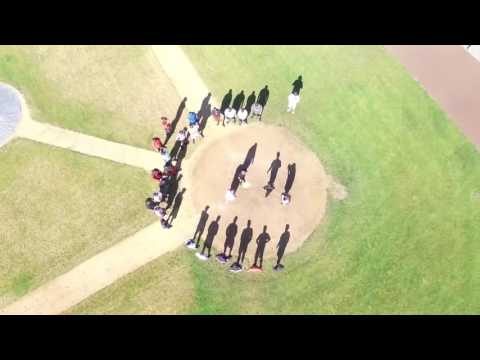
In the fast-paced world of baseball, every split-second decision matters. And when it comes to tag plays, the role of umpires becomes even more crucial. Umpire mechanics for tag plays are not just about making the right call, but also about creating a spectacle on the field. The precise movements, the anticipation, and the split-second decisions all contribute to the excitement of the game. In this article, we delve into the world of umpire mechanics for tag plays and uncover the secrets behind their clean, concise, and eye-catching approach that keeps us on the edge of our seats.
What is the rule for tagging in baseball?
In the game of baseball, the tag rule is a crucial aspect of determining whether a baserunner is out or safe. When a fielder touches the baserunner with the ball or with their hand or glove holding the ball, it results in a tag out. This play occurs while the ball is live and the runner is at risk of being put out, typically when they are not in contact with a base. The tag rule serves as a pivotal moment in the game, where the fielder’s swift and accurate touch can spell defeat for the baserunner.
The tag rule in baseball and softball is a pivotal play that can shift the course of a game. To secure an out, a fielder must touch the baserunner with the ball or with their hand or glove holding the ball. This action, known as a tag out, takes place while the ball is in play and the runner is in danger of being put out, most commonly when they are not positioned on a base. With the outcome of the game hanging in the balance, the tag rule demands precision and quick reflexes from the fielder, making it a thrilling moment for both players and spectators alike.
What do the plate umpires mechanics entail?
The plate umpire’s mechanics involve positioning themselves correctly in the catcher’s box, ensuring a clear line of sight to all parts of the strike zone. Once in position, the umpire lowers their torso so that their chin is slightly above the crown of the catcher’s helmet. This allows them to maintain visibility without having to turn their head, ensuring accurate calls on the outside corner of the plate.
Can a person be tagged out without having the ball in their glove?
Yes, in order for a putout by tag to be successful, the runner must be tagged with either a hand holding the ball, or the glove holding the ball. This means that simply having the ball in possession is not enough to tag someone out; the fielder must physically touch the runner with the ball in hand or glove. This requirement ensures that there is a clear and definitive way to determine if the runner has been tagged out, adding a level of fairness and accuracy to the game. Whether it’s a swift tag with a gloved hand or a quick touch with the ball itself, successfully tagging out a runner requires precise timing and skill from the fielder.
Seamlessly Execute Tag Play Calls: Unlocking the Secrets of Umpire Mechanics
Seamlessly executing tag play calls is a crucial aspect of umpire mechanics that can unlock the secrets of a successful game. With precision and clarity, umpires must make split-second decisions on whether a runner is safe or out, relying on their expert knowledge of the rules and their ability to position themselves for the best view. By seamlessly transitioning from their initial position to the optimal angle for a clear view of the tag, umpires can confidently make accurate calls that maintain the integrity of the game. This seamless execution not only ensures fairness and accuracy but also enhances the overall experience for players, coaches, and fans, creating a visually captivating and engrossing game.
Efficient Tag Play Calls: The Art of Streamlining Umpire Mechanics in Baseball
Efficient Tag Play Calls: The Art of Streamlining Umpire Mechanics in Baseball
In the fast-paced world of baseball, every second counts. That’s why umpire mechanics play a crucial role in ensuring accurate tag play calls. Umpires have mastered the art of streamlining their movements, making split-second decisions with precision and confidence. By employing efficient tag play calls, umpires minimize delays, enhance the flow of the game, and maintain the integrity of the sport. Their concise and well-coordinated actions not only captivate spectators but also contribute to the overall efficiency and fairness of the game.
Umpires, like skilled artists, have perfected the art of clean and concise tag play calls. Their streamlined mechanics allow them to swiftly maneuver around the field, positioning themselves for optimal viewing angles. With a keen eye and unwavering focus, umpires make split-second decisions that can be the difference between an out or a safe call. By maintaining a coherent and consistent set of mechanics, umpires ensure that the game flows smoothly, keeping players, coaches, and fans engaged. The efficiency and eye-catching nature of their movements make them an integral part of the baseball experience, leaving an indelible mark on the sport’s rich history.
In the complex world of baseball umpire mechanics, precision and quick decision-making are essential. From the split-second tag plays at the plate to the intense scrutiny of slow-motion replays, umpires must navigate an intricate dance of positioning, timing, and judgment. By honing their skills and adhering to standardized mechanics, these unsung heroes of the game ensure fairness and accuracy, ultimately preserving the integrity of America’s favorite pastime. So, the next time you witness a close tag play, remember the artistry behind the scenes and appreciate the crucial role umpire mechanics play in the game we love.
